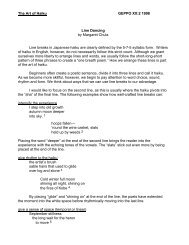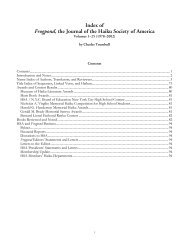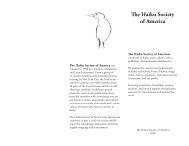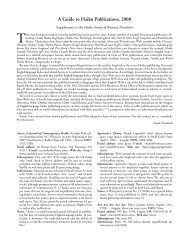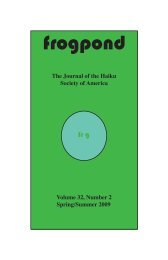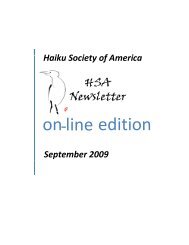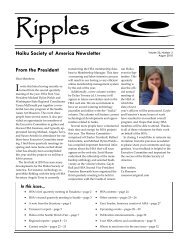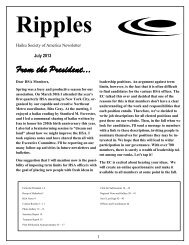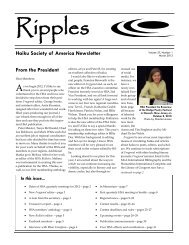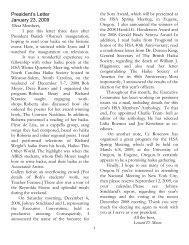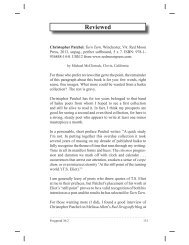Frogpond 34.3 • Autumn 2011 (pdf) - Haiku Society of America
Frogpond 34.3 • Autumn 2011 (pdf) - Haiku Society of America
Frogpond 34.3 • Autumn 2011 (pdf) - Haiku Society of America
Create successful ePaper yourself
Turn your PDF publications into a flip-book with our unique Google optimized e-Paper software.
Juxtaposing the religious significance <strong>of</strong> the time <strong>of</strong> year during<br />
which the eggs hatched allows readers entry into the haiku and<br />
my emotion. With revision, the two parts <strong>of</strong> the haiku complement<br />
each other, together reinforcing the sense <strong>of</strong> a time for<br />
inner reflection and new beginnings.<br />
Yom Kippur<br />
the corn snake’s eggs<br />
begin to hatch<br />
I learned how to read the haiku <strong>of</strong> others, to move beyond the<br />
surface imagery, to go deeper and find my own interpretations,<br />
drawing from my accumulative knowledge and life experiences.<br />
Timothy Russell’s haiku parsings taught me how to spot the<br />
illusion <strong>of</strong> drama where none actually exists at the haiku’s<br />
core—such as the artificiality <strong>of</strong>ten created by the popular<br />
use <strong>of</strong> inverted syntax. His work confirmed for me the value<br />
<strong>of</strong> effective juxtaposition and taught me how to recognize its<br />
presence—or absence. With Tim’s brilliant and addictive dissections<br />
at my fingertips, I began to understand which <strong>of</strong> my<br />
haiku lacked clarity or were incomplete or one-dimensional. I<br />
was eager to take them apart and rebuild them. For example,<br />
reached maturity as<br />
in a blue sky<br />
the soaring hawk<br />
stretches its circle<br />
winter solstice<br />
the circling hawk<br />
widens its range<br />
During the late Nineties and at the beginning <strong>of</strong> the new millennium,<br />
Elizabeth St. Jacques taught me that there is something to be learned,<br />
some morsel <strong>of</strong> insight in every sincerely expressed haiku, no matter<br />
a poem’s perceived weakness or roughness. From her example,<br />
I learned the value <strong>of</strong> humility, a sense <strong>of</strong> humor, and an open mind<br />
when given the privilege <strong>of</strong> appraising another poet’s work. Elizabeth’s<br />
selfless, joyous presence in my life, perhaps more than anything<br />
else, helped shape the teacher and editor that I would become. By<br />
. . . . . . . . . . . . . . . . . . . . . . . . . . . . . . . . . . . . . . . . . . . . . . . . . . . . . . . . . . . .<br />
<strong>Frogpond</strong> 34:3 41



